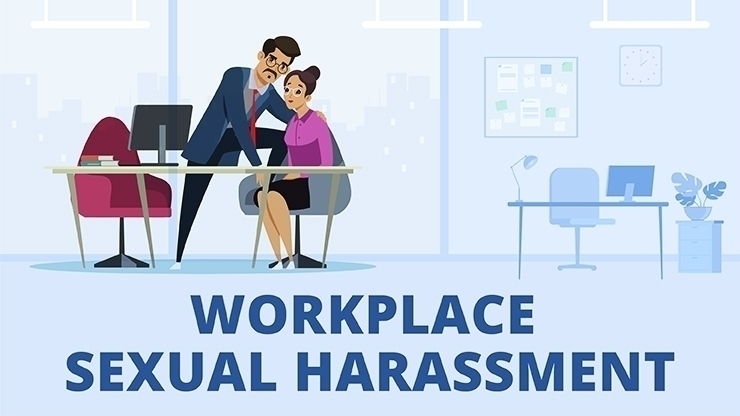Sexual harassment in the workplace is a serious issue that affects employees at all levels of an organization. It can create a toxic work environment, lower morale, reduce productivity, and lead to legal consequences for both the harasser and the employer. Handling sexual harassment effectively requires a proactive approach that emphasizes prevention, supports victims, and ensures accountability. This article outlines steps that employees, managers, and organizations can take to handle sexual harassment in the workplace.
Understanding Sexual Harassment
Sexual harassment includes any unwelcome sexual advances, requests for sexual favors, or other verbal or physical conduct of a sexual nature that creates a hostile work environment. It can manifest in various forms, such as inappropriate jokes, unwanted touching, suggestive comments, or even subtle actions like leering or invading personal space. Sexual harassment can be perpetrated by anyone, regardless of gender, and can occur between peers, supervisors and subordinates, or even from clients or customers.
The Impact of Sexual Harassment
The impact of sexual harassment on victims can be profound. It can lead to emotional and psychological distress, including anxiety, depression, and a loss of self-esteem. Victims may also experience physical symptoms such as headaches, fatigue, or sleep disturbances. In addition to personal harm, sexual harassment can disrupt the workplace by causing tension among employees, reducing teamwork, and leading to increased absenteeism and turnover. Ultimately, organizations that fail to address sexual harassment risk damaging their reputation and facing legal action.
Preventing Sexual Harassment
Prevention is the first line of defense against sexual harassment in the workplace. Employers must take steps to create an environment where harassment is clearly recognized as unacceptable and where employees feel safe reporting any concerns.
- Develop a Clear Anti-Harassment Policy: Every organization should have a comprehensive anti-harassment policy that clearly defines what constitutes sexual harassment, outlines the procedures for reporting incidents, and describes the consequences for violators. This policy should be included in employee handbooks, posted in common areas, and regularly communicated to all staff.
- Provide Regular Training: Training is essential to ensure that all employees understand what sexual harassment is, how to recognize it, and how to respond if they experience or witness it. Training sessions should be mandatory and conducted regularly to keep the topic fresh in employees’ minds. Special training should be provided for managers and supervisors, emphasizing their responsibility to address complaints and prevent retaliation.
- Foster a Respectful Workplace Culture: Creating a culture of respect and inclusion can help prevent sexual harassment. This involves promoting open communication, encouraging mutual respect, and emphasizing the importance of diversity. Leaders should model appropriate behavior and make it clear that harassment of any kind will not be tolerated.
Responding to Sexual Harassment
When sexual harassment occurs, it is crucial to respond promptly and effectively to protect the victim and prevent further incidents. Here’s how organizations and individuals can handle these situations:
- Encourage Reporting: Victims of sexual harassment often hesitate to come forward due to fear of retaliation or disbelief. To counter this, organizations must create a safe and supportive environment for reporting. This can include providing multiple channels for reporting, such as anonymous hotlines, online portals, or direct contact with HR representatives. It’s important that employees feel assured that their complaints will be taken seriously and handled confidentially.
- Conduct Thorough Investigations: Once a complaint is made, it should be investigated promptly and thoroughly. The investigation should be impartial, with both the accuser and the accused given the opportunity to present their side of the story. All relevant evidence, including witness statements, emails, and other documentation, should be reviewed. The investigation process should be clearly documented, and the findings should be communicated to all parties involved.
- Take Appropriate Disciplinary Action: If the investigation confirms that harassment occurred, the organization must take appropriate disciplinary action against the harasser. This could range from a written warning or mandatory training to suspension or termination, depending on the severity of the misconduct. The goal is to hold the harasser accountable and send a clear message that such behavior will not be tolerated.
- Support the Victim: Victims of sexual harassment should be offered support throughout the process. This might include counseling services, medical care, or adjustments to their work situation (e.g., moving their workstation or altering their reporting line). Ensuring the victim does not face retaliation is critical; any form of punishment for coming forward must be strictly prohibited.
- Monitor the Workplace: After an incident of sexual harassment has been addressed, it is important to continue monitoring the workplace to ensure that the behavior does not recur. Regular check-ins with the victim and their coworkers can help identify any ongoing issues and provide reassurance that the organization is committed to maintaining a safe and respectful environment.
Legal Considerations
Organizations must also be aware of the legal implications of sexual harassment. In many countries, sexual harassment is a violation of employment laws, and employers have a legal obligation to prevent and address it. Failure to do so can result in lawsuits, financial penalties, and damage to the organization’s reputation. Employers should stay informed about relevant laws and ensure their policies and procedures comply with legal requirements.
Conclusion
Handling sexual harassment in the workplace is a complex but essential responsibility. By prioritizing prevention, responding effectively to incidents, and supporting victims, organizations can create a safer and more inclusive environment for all employees. Addressing sexual harassment not only protects individuals but also strengthens the overall health and productivity of the workplace.
